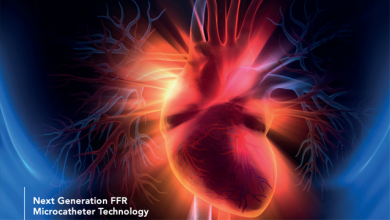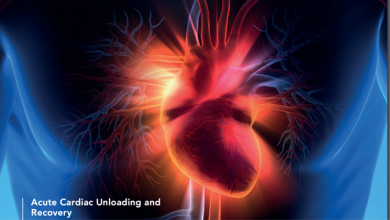Search results
Frailty Scores and CVD
Author(s):
Kenneth Jordan Ng Cheong Chung
,
Chris Wilkinson
,
Murugapathy Veerasamy
,
et al
Added:
3 years ago
Article
Author(s):
Navin K Kapur
Added:
3 years ago
Author(s):
Lavinia Gabara
,
Jonathan Hinton
,
Julian P Gunn
,
et al
Added:
3 years ago
The optimal assessment and management of patients presenting with recent onset chest pain is achieved by acquiring information about the coronary anatomy and physiology, enabling decisions to be made based upon evidence of ischaemia at a patient-level and at lesion-level. There are robust data indicating that the visual assessment of stenosis severity alone does not provide enough information…
View more
Author(s):
Roberto Diletti
Added:
6 years ago
Author(s):
Jakob Josiassen
Added:
3 years ago
Author(s):
Edwin Lee
,
Ajay J Kirtane
Added:
3 years ago
The outcomes of patients with ST-segment elevation myocardial infarction (STEMI) have improved in recent years with the more widespread adoption of definitive reperfusion therapies, including rapid recanalisation of the infarct-related artery with percutaneous coronary intervention (PCI). Nonetheless, despite the near universal restoration of normal epicardial flow following primary PCI for STEMI…
View more
Author(s):
Jean-Philippe Collet
Added:
3 years ago
The role of platelets in coronary artery thrombosis is well-established.1 They also play a critical role in a number of cardiovascular conditions including stroke, peripheral vascular disease and diabetes, and may be involved in the pathology underlying atherosclerotic changes.1 Antiplatelet agents such as clopidogrel, a platelet P2Y12 receptor antagonist, and aspirin are used for the prevention…
View more
Author(s):
D Scheiber
Added:
6 years ago
Author(s):
Ji Hyun Lee
,
Bríain ó Hartaigh
,
Donghee Han
,
et al
Added:
3 years ago
Coronary computed tomography angiography (CCTA) is a noninvasive tool capable of directly visualising the coronary anatomy with high sensitivity and negative predictive value (NPV) for coronary artery disease (CAD) compared to invasive coronary angiography (ICA).1,2 Recent innovations in computed tomography (CT) technology have led to the rapid development of CCTA and its selection as an anatomic…
View more
Author(s):
Tomoki Sakata
Added:
2 months ago














 « First
« First